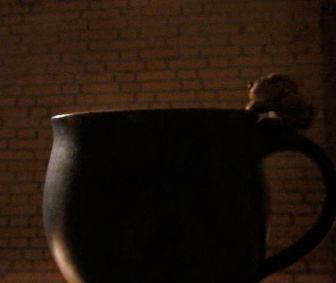Why would it be interesting to talk about this in a science class?
As a kid I used to wonder why blowing on a hot soup or beverage should be a good idea. Wouldn’t my breath be warmer than room temperature, and hence shouldn’t the soup get warmer instead of colder?
Then I didn’t think about this question for 25 or so years (scary, I know), and then today, when I was blowing on my tea, I realized that by now I knew why I was doing it, even though I had never related my science knowledge to the everyday act of blowing on hot tea.
So why do we blow on hot tea?
The main reason is that at the tea’s surface, evaporation takes place. We can oftentimes see the steam coming off. The molecules that left the cup condense in a fog over the cup. If they stay in place, evaporation will slow. If we blow them away, the air is replaced with colder surrounding air, and evaporation continues.
Another reason is that as we blow on the surface, we create ripples. Hence the surface area is larger than before and more exchange can happen over a larger area. But I would guess that that effect is much smaller than the first one.
The main reason I wanted to write this blog post was because I could see the picture I wanted to show before my eyes: This sweet cup with the rabbit on the handle and the steam rising from it. Turns out it is really difficult to take pictures of that! At least with my camera and my lack of patience. And believe me – I tried for a full 15 minutes with different light sources at different angles and everything! So for now all you get to see is the video below where it is slightly better visible than in a still picture – and please try to imagine the steam! And I will be back once I’ve figured out how to document it properly!

Pingback: The insulating properties of marshmallows |
Pingback: The insulating properties of marshmallows – Mirjam S. Glessmer